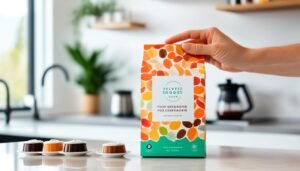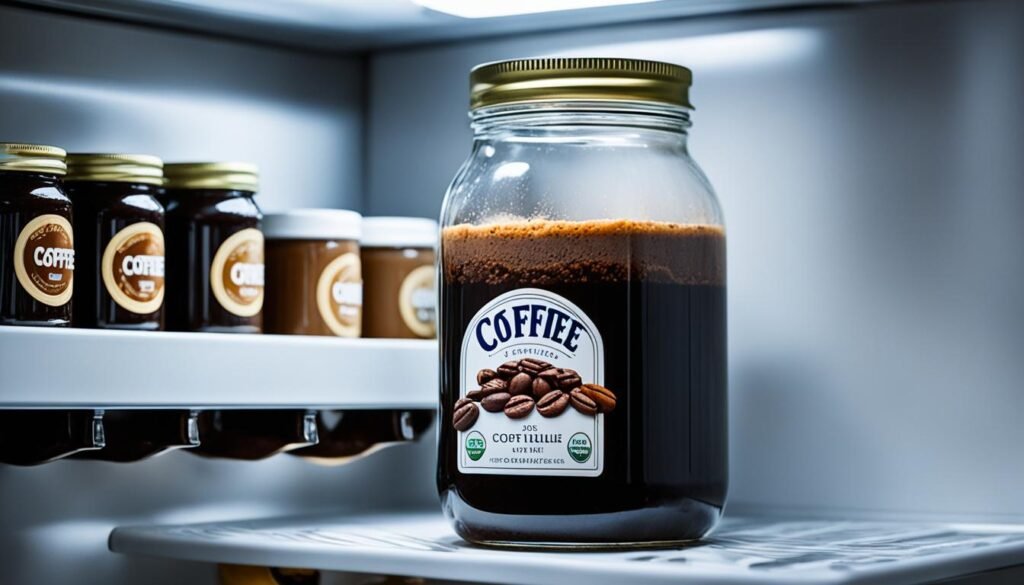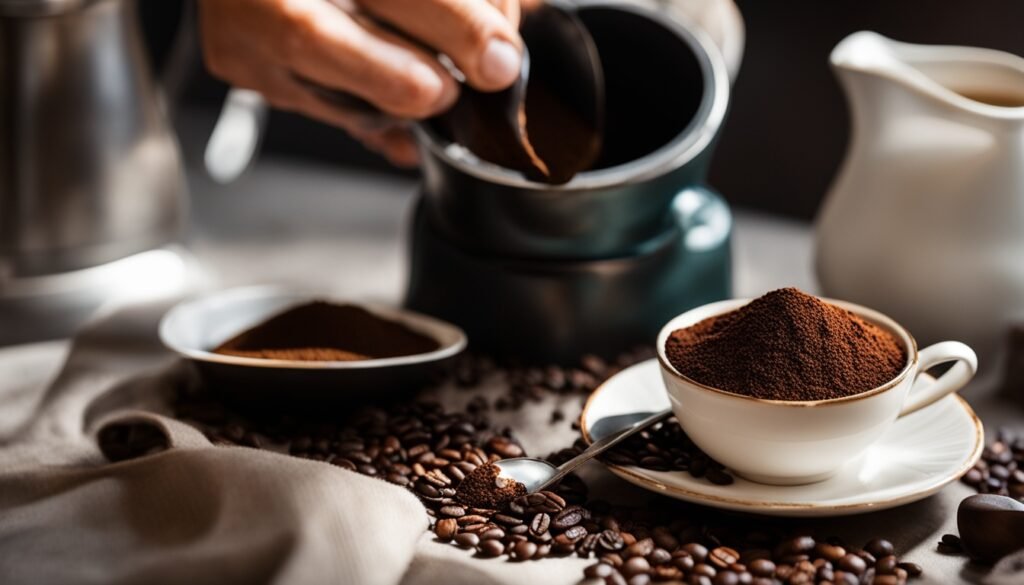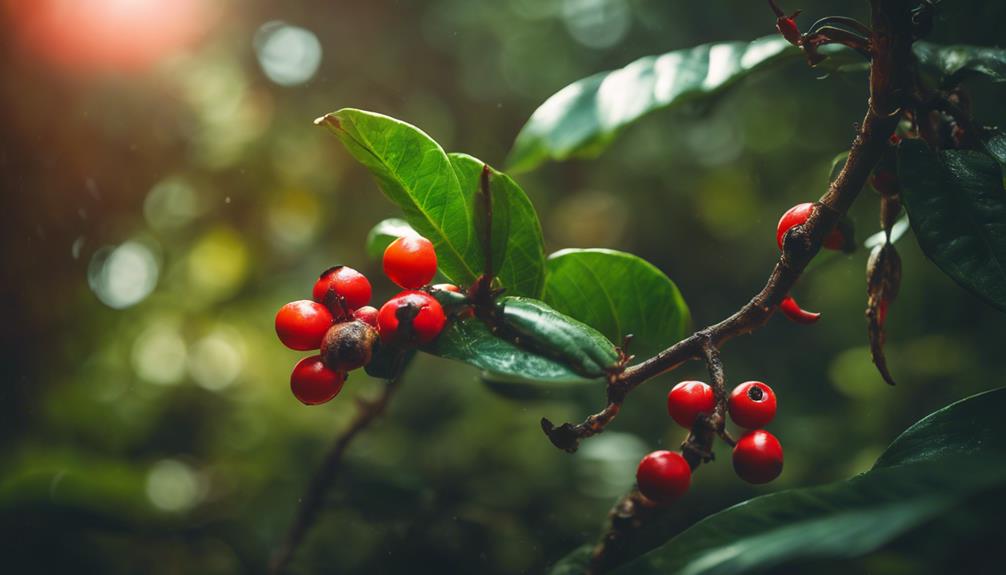When it comes to choosing between Arabica and Robusta coffee beans, the debate revolves around their flavor, resilience, and cost. Arabica beans are renowned for their smooth, sweet taste with hints of chocolate and fruit, but they are delicate and come with a higher production cost.
On the other hand, Robusta beans offer a more robust and bitter flavor while being highly resistant to harsh weather conditions, making them a more affordable option. Despite Arabica's dominance in the market due to its refined taste, Robusta's cost-effectiveness and resilience make it a significant contender.
Understanding these distinctions is key to making informed decisions about your coffee preferences and purchases. Delve deeper into the world of coffee beans to discover more about their nuances.
Arabica Coffee Characteristics
Arabica coffee is widely cherished for its smooth and sweet flavor, noted for its hints of chocolate and fruitiness. This coffee type, the most popular globally, comprises two main varieties: Typica and Bourbon.
The Bourbon variety offers a more intricate flavor profile, adding richness to the overall experience. Arabica is favored for its refined taste, often described as velvety with subtle notes of chocolate and fruit, making it a top choice for coffee enthusiasts and connoisseurs.
Despite its delicate nature that requires careful cultivation, Arabica's susceptibility to environmental factors can affect its production and availability.
Market Share Analysis
Arabica coffee dominates the global market with around 60% share, showcasing its popularity among consumers despite higher costs and susceptibility to weather conditions. This significant market presence highlights the preference for Arabica's rich flavor profile.
Key factors influencing Arabica's market leadership include:
- Consumer Appeal: Arabica's smooth, sweet taste with hints of chocolate and fruits appeals to a wide range of coffee enthusiasts.
- Production Challenges: Due to its delicate nature, Arabica requires specific climate conditions, making its cultivation riskier and more expensive.
- Economic Influence: Despite higher production costs leading to elevated market prices, consumers consistently choose Arabica over other varieties.
These factors collectively shape the market dynamics, illustrating both the advantages and challenges associated with Arabica coffee production.
Robusta Coffee Traits
Robusta coffee, known for its bold and bitter taste, holds a significant place in the global coffee market due to its resilience and higher caffeine content. The robusta beans are highly valued for their ability to thrive in harsh weather conditions and resist diseases, making them a reliable choice for farmers. This durability leads to lower production costs, making robusta coffee a more affordable option for both producers and consumers.
Moreover, robusta beans contain nearly double the caffeine content of arabica beans, contributing to their strong and intense flavor profile. These characteristics make robusta coffee a popular choice for blends, enhancing the overall depth and complexity, especially in espresso preparations where a thicker crema is desired.
Blending Techniques
Blending techniques play a crucial role in the coffee production process by skillfully combining different bean varieties to create unique and balanced flavor profiles that cater to diverse consumer preferences. This approach allows coffee producers to enhance both taste and cost-efficiency.
Through blending, producers can achieve the following benefits:
- Enhanced Flavor Complexity: By blending Arabica and Robusta beans, producers can achieve a more nuanced and rich flavor profile, blending the smoothness of Arabica with the robustness of Robusta.
- Consistent Flavor: Blending ensures a consistent and uniform flavor profile, which is essential for establishing a strong brand identity in the market.
- Cost-Effective Production: Incorporating Robusta beans, known for being more affordable and resilient, can help lower production costs without compromising on the quality of the final product.
These blending techniques empower producers to effectively meet market demands while upholding high standards in their coffee offerings.
Decision Factors
When choosing between Arabica and Robusta coffee beans, it's essential to consider various factors that align with consumer preferences and production capabilities.
Arabica beans are known for their smooth, sweet flavor with hints of chocolate and fruit, making them perfect for single-origin and drip coffee. However, they are sensitive to weather changes and diseases, leading to higher production costs.
On the other hand, Robusta beans are more robust and cost-effective, with a higher caffeine content and a slightly bitter taste. They are often used in blends to enhance flavor and create a rich crema in espresso.
The decision between the two beans depends on finding the right balance between flavor preferences, resilience to environmental factors, and cost efficiency.
Conclusion
In the realm of coffee beans, Arabica and Robusta present unique pros and cons.
Arabica boasts exceptional flavor but comes with higher costs and requires more attention.
On the other hand, Robusta is known for its resilience and affordability, despite its stronger taste.
Blending these beans skillfully can result in a well-balanced cup, reflecting the intricate interplay of consumer preferences and market dynamics.
The decision between Arabica and Robusta is akin to a delicate balancing act, much like walking a tightrope, where each step must be carefully considered.












